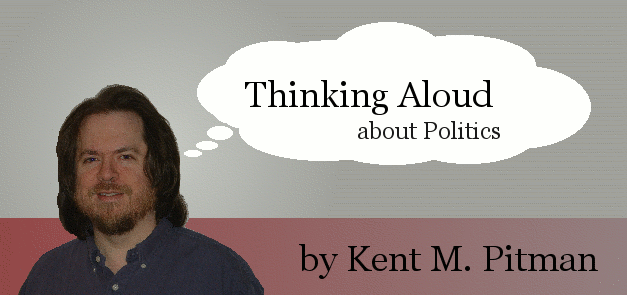Federal Deposit Insurance (FDIC)
by Kent M. Pitman (Monday, June 6, 2005)
The real way to protect "the little guy" is to make the FDIC protect $100,000 or $130,000 or even $500,000 per person rather than per account. It's true that the multiplicative effect you cite scales, but what doesn't scale is the availability of enough funds for the little guy to fill more than one of these accounts. If rich people (for pretty much any value of rich you want to draw) have to self-insure above a certain amount per-person (rather than per-account), it would more than pay for the ability to extend more protection to the poor. The idea that FDIC has no per-person upper bound means that rich people are protected when they keep large amounts of cash in the bank, which I think is not a necessary service of government.
Fixing the FDIC
Every citizen should be protected directly for some amount of their savings in any qualified bank, let's say $200K. I say directly because it would not be the institution that would be insured, it would be them personally. Instead of institutions being "FDIC insured", they would be "FDIC qualified", indicating that the FDIC considered them to be an appropriate risk for consumers to be placing their money there, and is willing to pay to cover losses against the direct insurance if such an institution goes bust.
Any citizen who has less than the protected amount deposited in FDIC insured institutions signs a notice with their bank confirming this fact. The FDIC must report the amount of the deposit and a tax-id number, and can cross-check retroactively that this was not violated before paying on a premium.
If a citizen has more than $200K deposited, they may either elect to spread their protection generally across their money, such that no loss may cut into that base $200K, or they may designate a specific portion of their money to be protected and the other portion to not be protected. So if I have $300K in one bank and $150K in another bank, and the smaller bank went bankrupt, I would lose all $150K because I still had $300K remaining unless I specifically had designated that the $150K was protected from that account and only $50K from the other account. In that case, if the larger bank went bankrupt, I would lose $250K. Most people would probably want the blanket coverage, but some people might not. I add this option mostly for completeness because I don't really think it hurts things as long as the FDIC is doing a fairly good job of approving only reputable banks in the first place.
There should be special protection (either special insurance, or a requirement to give back money recently acquired if bankruptcy is about to occur, as sometimes happens for other expenses recently occurred) for the case I heard someone on C-SPAN cite today where someone sells a house, deposits the check, and then the next day the bank is out of business. That's just a weird case that it can't be very expensive for the government to insure against specially. Making that be a justification as to why people need huge lines of protection doesn't make sense. Allow the person to safely cash any such large check once a year (to avoid people getting extra insurance by constantly moving money) and then to distribute the funds within a rational period of time (perhaps 2-3 months). This is critically important since in the modern world one cannot just walk in and get that much cash to hold themselves-they are veritably forced to put the money in a bank by present day banking laws, especially lately with the Patriot Act trying to track where such large amounts of money go.
Rationale
This proposal has the following good effects:
It means you can actually probably have a higher ceiling of protection for ordinary people because you're getting rid of liabilities the government how has to cover rich people more than once.
It stops insuring people with huge amounts of money for piles of cash that they could and should insure for themselves if they need to. The taxpayers should not bear this burden.
Once implemented, people don't have to file any fancy forms to get coverage. One is mostly protected by default.
By not insuring all accounts, banks do have to worry that if they behave badly, they won't get bailed out. This, in turn, should be an incentive to them having better business practices. As long as the bank thinks that the government thinks that it can't let FDIC-qualified banks go bankrupt, the bank is too comfortable. Taxpayers should not be paying for bailouts. The correct solution is to de-couple FDIC protection from the bank and to attach it to individuals, as I've suggested here.
